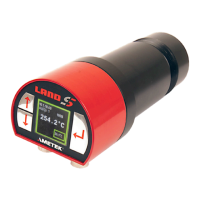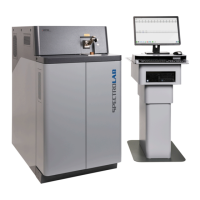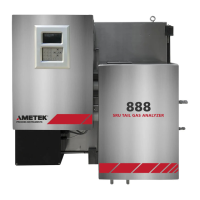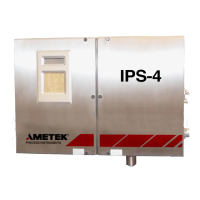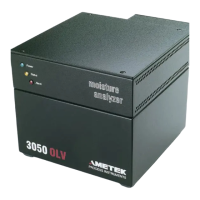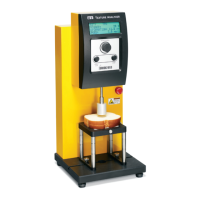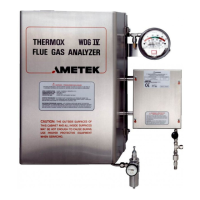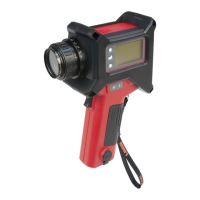
Do you have a question about the Ametek Land Cyclops L Series and is the answer not in the manual?
| Model | Cyclops L Series |
|---|---|
| Emissivity | Adjustable from 0.1 to 1.0 |
| Sighting | through-lens sighting |
| Display | LCD |
| Output | USB |
| Enclosure Rating | IP65 |
Read all instructions, warnings, and cautions before using the product.
Explains hazard indicators and equipment symbols for safe use.
Covers operation, power, storage, unpacking, and lifting procedures.
Provides contact information for UK, China, USA, and India offices.
Procedures for returning goods and information on design standards and copyright.
Provides information for using the Cyclops xxxL portable thermometer.
Describes the Cyclops range, measurement types, and features.
Identifies instrument labels, type, and serial number locations.
Details temperature range, modes, optics, target size, and response times.
Covers accuracy, repeatability, operating conditions, power, and accessories.
Identifies and describes the various components of the thermometer.
Explains battery and USB power, and how to replace the battery.
Details battery installation and power saving features.
Procedure for setting the instrument's internal time and date.
Step-by-step guides for setting the time and date.
Details the ON/OFF switch and trigger function in different modes.
Describes the display modes and keypad navigation.
Covers adjustable eyepiece and optical focus ring operation.
Details the Bluetooth and USB connectivity options.
Explains how to calculate target size for 100L, 160L, 390L models.
Target size for 055L, neutral density filter, and lens protection.
Critical warning against looking at the sun through the instrument.
Instructions for fitting close-up lenses and dark filters.
Details how the eyepiece works and how to adjust it.
Overview of display modes and details of Measure Mode operation.
Explains Peak, Averaged, Valley, and Meltmaster measurement modes.
Details operation of Route Mode and Operator Emissivity Mode.
How to access and navigate the thermometer's menu system.
Explains menu icons and how to enable/manage recording.
Details settings for Backlight, Sounder, Window Compensation, and Bluetooth.
Options for sending data via serial port (Instantaneous/Select).
Overview of trigger operation modes: Classic, Burst, Latched.
Details trigger operation in Classic, Route, and Operator modes.
Explains Burst and Latched trigger modes for temperature monitoring.
How to enable and manage data recording of measurements.
How to review stored readings or clear internal memory.
Critical warning against looking at the sun through the instrument.
Details the three main setup groups: Data Output, Measurement, Recording, UI.
Step-by-step guide for a basic temperature measurement.
Guide for complex measurements involving viewing ports.
Guide for operating the thermometer in Route Mode.
Details Bluetooth pairing, connection, and power considerations.
How USB communications are detected and used.
Typical emissivity values for various materials for 100L/160L.
Emissivity values for various metal and refractory materials.
Emissivity for other materials and in-situ determination method.
Emissivity values for specific models and applications.
Details accessories like close-up lenses and carrycases.
Information on Cyclops Logger software and protective thermal cover.
Describes the LER adaptor for users wearing eye protection.
Details industrial casing, lens hood, and lists spare part numbers.
Instructions for fitting and using the LER adaptor.
How to use the thermometer with the LER adaptor fitted.
Step-by-step guide for fitting the industrial rubber casing.
Continues the step-by-step instructions for fitting the casing.
Recommends keeping components clean and checking for damage.
A form to record custom parameter settings and values.
Describes the data logging protocol for Classic Mode streams.
Explains packet interpretation and data logging for Burst Mode.
Data logging for Latched/Route modes and Bluetooth heartbeat.
Details error codes 1, 2, and 3 and their respective resolutions.
Detailed byte-by-byte breakdown of the data stream format.




